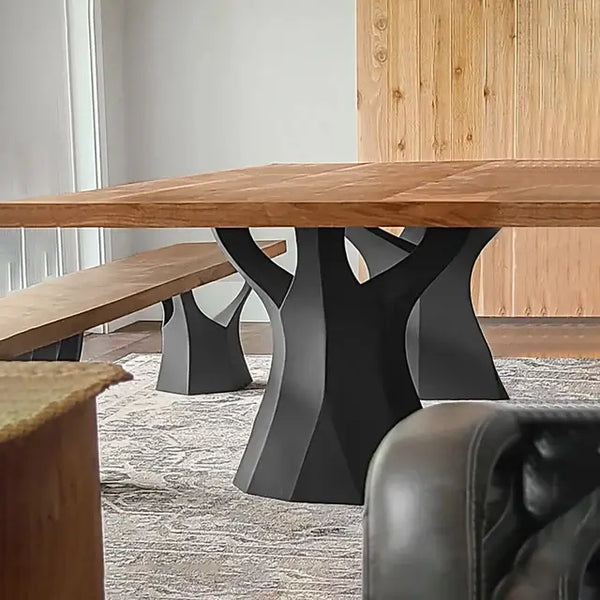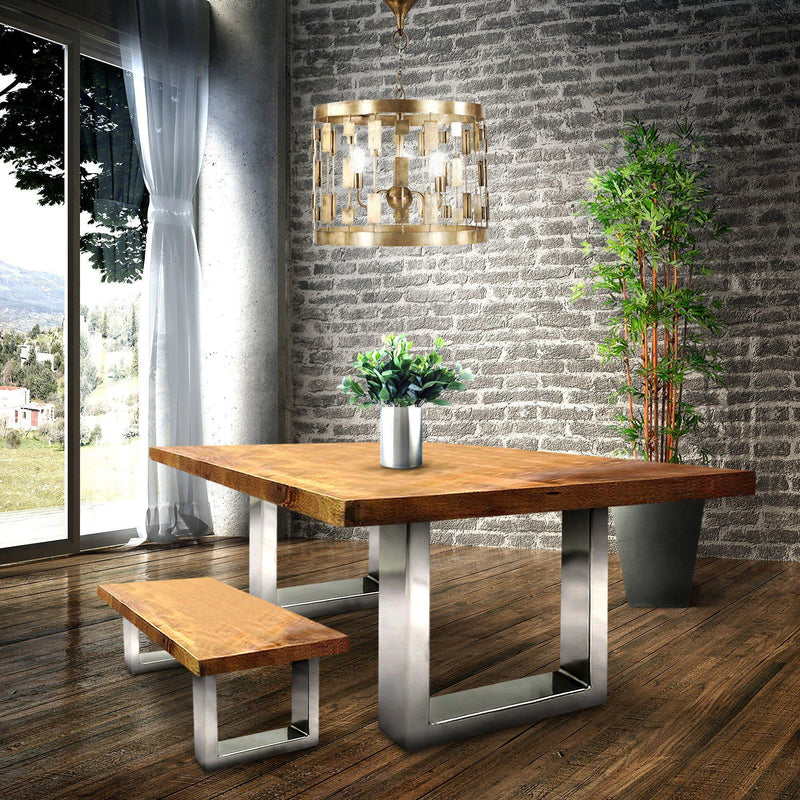Expert Tips for Putting Up Dining-room Table Legs for Maximum Stability
When it comes to mounting dining-room table legs, accomplishing optimum stability is critical for both functionality and visual appeals. The procedure starts with selecting the appropriate materials and hardware, complied with by precise placement and factor to consider of weight distribution. Each action plays an important duty in ensuring that the finished item stands up to everyday use without compromising safety and security or style integrity. Recognizing the nuances of these elements can dramatically influence the total outcome. What certain techniques can improve security even additionally?
Select the Right Legs
When choosing the ideal legs for your dining-room table, it is crucial to consider both performance and appearances. The legs you choose will substantially influence the total design and stability of the table. Review the table's planned usage; if you anticipate constant celebrations, stronger legs, such as those made from strong wood or metal, may be much more appropriate, as they provide boosted toughness and assistance.
Following, think about the height and style of the legs in connection with the tabletop. Basic table generally range from 28 to 30 inches in elevation, so make certain the legs straighten with this criterion for comfort. The style of the legs ought to match the style of the tabletop-- whether it be modern-day, rustic, or typical. For example, tapered legs can add a modern touch, while turned legs could share a much more classic visual.

Select Appropriate Hardware
Just how can the right equipment enhance the security and durability of your dining-room table? The selection of proper equipment is vital to ensuring that the legs of your table are securely connected and able to hold up against regular use. High-grade screws, bolts, and brackets give the necessary stamina to sustain the weight of the table, as well as any type of added lots placed upon it throughout meals or celebrations.
When choosing screws, choose those made from sturdy materials such as stainless steel or brass, which withstand rust and preserve honesty with time. The size of the screws is equally important; they ought to permeate deeply into the table's structure without jeopardizing stability. For bolted links, take into consideration making use of lock washing machines to stop loosening due to vibration or movement.
Additionally, using corner braces can include additional assistance, specifically for bigger tables or those with heavier tops. These brackets disperse weight uniformly and assist maintain the table's form. Making certain that the equipment you select is appropriate for the specific products of your table will further improve its general stability and long life, enabling you to enjoy your eating experience for many years to come.
Ensure Correct Positioning
Proper positioning of dining space table legs is important for both visual appeal and useful stability. To accomplish optimum positioning, start by measuring the range from the table's edges to the leg accessory factors.
Utilize a level throughout installation to confirm that each leg is vertical to the tabletop. This step is critical, as even minor disparities can rise right into considerable security concerns over time. It is suggested to mark the preferred leg placements on the bottom of the table with a pencil or masking tape before safeguarding them. This technique serves as a visual guide, enabling changes as required.
In addition, ascertain the alignment after the initial screws are tightened, as adjustments may be required before fully securing the hardware. By prioritizing correct placement, you not just boost the table's total layout however likewise make sure that it stays practical and stable for years to come.

Think About Weight Distribution
After guaranteeing proper placement of the dining-room table legs, it's their explanation important to take into consideration weight distribution to enhance security and functionality. dining room table legs. Correct weight distribution is essential in preventing tottering and guaranteeing that the table can support its designated load without threat of tipping or collapsing
When placing the legs, ensure they are positioned at equal distances from the facility of the table to uniformly distribute the weight across the framework. Consider the weight of the table top and any items that will regularly rest on it, such as decorative pieces or tabletop appliances. Tables with larger surfaces must ideally have legs positioned closer to the edges, as this optimizes the base of support and lessens the risk of instability.
Furthermore, if the table is planned for use in a high-traffic area, take into consideration using much heavier products for the legs or adding supporting components, such as cross-bracing or a lower shelf - dining room table legs. These modifications can aid maintain balance and stop changing during use. Eventually, a well-considered weight circulation strategy will substantially boost the table's overall performance, ensuring it stays a attractive and practical centerpiece for your eating area
Examination Security Prior To Usage
Testing the stability of the dining space table prior to usage is a critical step that should not be neglected. Guaranteeing that the table is safe and secure can stop crashes and extend the life expectancy of the furnishings. Begin by applying gentle pressure to various points on the table surface. Push down on the center and afterwards along the sides, changing or observing any kind of wobbling. If the table reveals instability, recognize the legs or joints that might need modification.
Next, check that all screws and bolts are tightened properly. Loosened links can result in instability and potential damages gradually. If required, use timber glue on joints to enhance security, making sure to allow adequate drying out time.

Verdict
To conclude, the installment of dining space table legs calls for careful factor to consider of products, weight, equipment, and placement circulation to attain maximum stability. By picking top quality bolts and tough legs, ensuring accurate positioning, and dispersing weight equally, the structural integrity of the table can be substantially boosted. Performing a security test before normal usage better ensures that the table will endure daily pressures, thereby offering a trustworthy and secure dining experience.
When it comes to installing dining area table legs, achieving optimum security is extremely important for both functionality and visual appeals. The legs you select will considerably affect the overall layout and security of official site the table (dining room table legs). Typical eating tables usually range from 28 to 30 inches in height, so guarantee the legs align with this standard for convenience.Correct placement of dining room table legs is important for both aesthetic allure and useful security.In final thought, the installation of eating area table legs needs careful consideration of products, weight, alignment, and equipment circulation to achieve optimum security